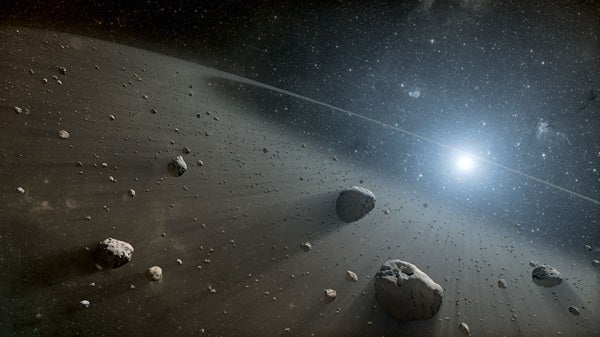The work, which was published online August 3 in Science, yielded two important results. First, astronomers spotted a relatively empty spot in the main asteroid belt. The low population in this area means asteroids found in it likely haven’t undergone significant collisions or evolution, leaving them largely unchanged since their formation. Second, the team identified the oldest family of asteroids found yet, revealing samples of our early solar system for future study.
Nothing is static in our solar system. Over time, asteroids in the main belt (and elsewhere) have undergone collisions that have changed their shape, composition, and other properties. The remnants of these collisions typically end up on similar orbits, creating “families” of asteroids that astronomers can trace back to one or a few parent bodies.
“By identifying all the families in the main belt, we can figure out which asteroids have been formed by collisions and which might be some of the original members of the asteroid belt,” said Dr. Kevin Walsh, an astronomer at SwRI and co-author on the paper, in a press release.
Astronomers have already identified more than 100 asteroid families. But the family recently identified was previously unknown, Walsh said. “We identified all known families and their members and discovered a gigantic void in the main belt, populated by only a handful of asteroids. These relics must be part of the original asteroid belt. That is the real prize, to know what the main belt looked like just after it formed.”
How did they find it? By using a new technique that looked for the “edges” of asteroid families. Over time, families spread apart, largely due to the effects of sunlight on the asteroids’ surface, which can impact their orbits. The effect impacts smaller bodies more than larger bodies, causing those small bodies to spread the widest. But by correlating properties such as size and distance, the team was able to reconstruct the shape of a new asteroid family — one that formed four billion years ago and stretches throughout the inner part of the asteroid belt.
This family is much darker (less reflective) than other known asteroid families. And those other known families are thought to have formed only about one billion years ago. Thus, the new family is four times older, revealing a much more pristine picture of the early solar system for astronomers to study.
Notably, four billion years ago is a time before the gas giants in our solar system had been locked into their current orbital positions. That’s significant, Walsh said, because “The giant planet migration shook up the asteroid belt, removing many bodies, possibly including the parent of this family.”
Data on the new family has already indicated that its smallest original members were at least 22 miles (35 kilometers) across. This information has significant meaning for the way in which the asteroids formed, as large initial sizes supports the theory that these bodies formed as dust particles smashed together, quickly creating larger bodies with more gravity.
Now that the team has successfully identified an old, previously unknown asteroid family with their technique, they plan to search the entire asteroid belt for more clues about how the bodies in it formed and the history they’ve undergone.










